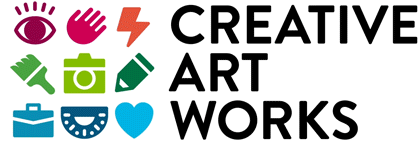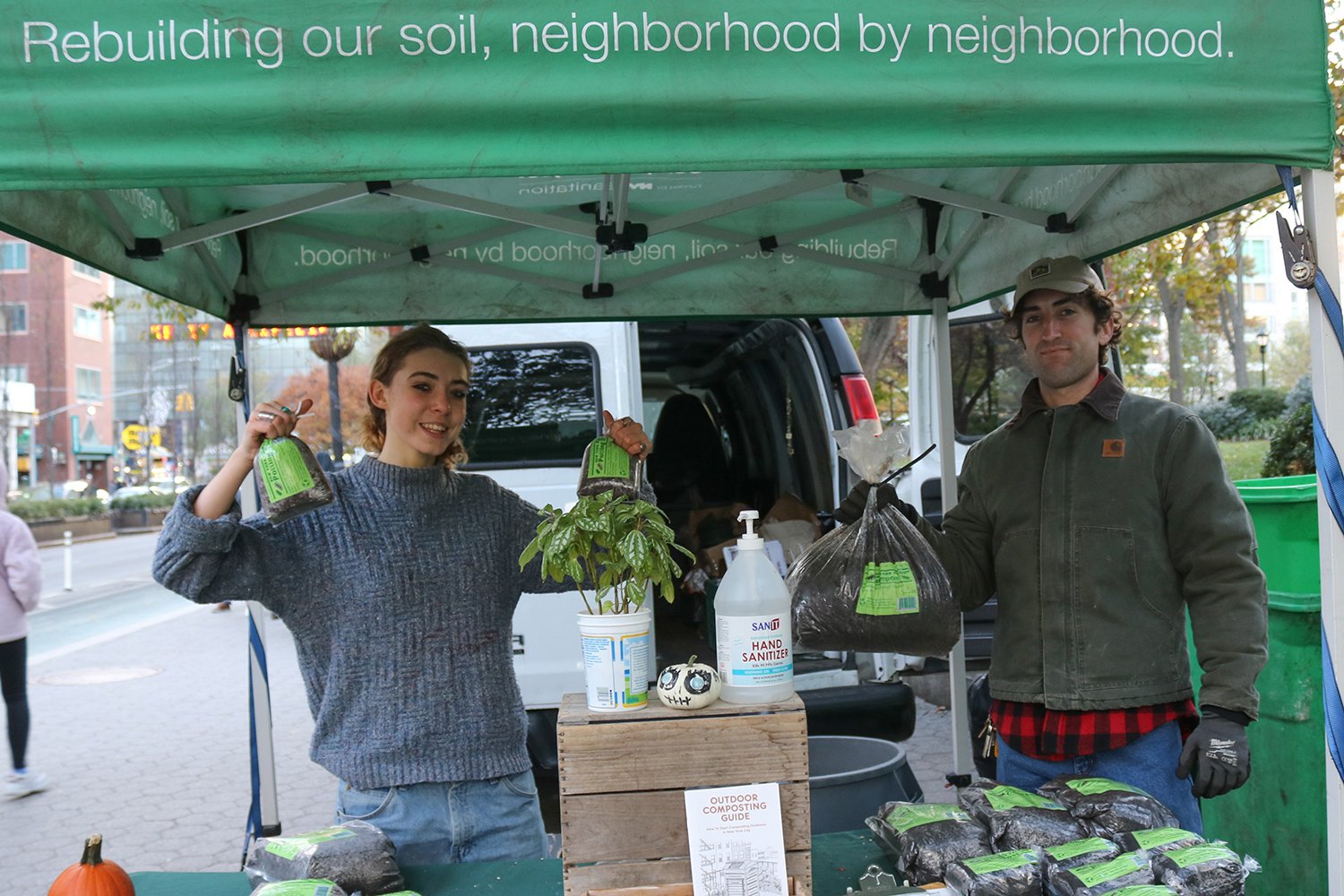On Assignment with a Young Photographer
Self-portrait of CAW Youth Apprentice Nermen Elkallini
“Not everything you do has to be perfect. Not everything you do has to have these big expectations. You could do things just to enjoy them and explore.”
CAW Youth Apprentice Nermen Elkallini Shares her perspective on learning photography, growing up as a first-generation American, and discovering a new passion for art.
Nermen Elkallini was born in Jersey City, NJ and her family moved to New York City when she was 10. Nermen’s parents were born and raised in Egypt, so she grew up with a strong connection to her Middle-Eastern roots, and that experience informs her worldview. Nermen is a current senior at High School for Health Professions and Human Services where she is in the Medical Assisting program to become a Certified Medical Assistant and later continue her education in the field of public health. Nermen first joined Creative Art Works last summer on the graphic design team in the multimedia program because she wanted to try something outside her comfort zone and not directly related to a medical career path; however, she discovered a passion for the arts and their ability to amplify issues of social justice and public health. When the NYC Department of Health and Mental Hygiene invited CAW to collaborate with the Center for Active Design to provide photography for the upcoming revised edition of the award-winning Active Design Guidelines, Nermen was chosen as one of six CAW all-stars to participate in the program. Over the course of this program, Nermen included a brief synopsis of her photography assigments with her weekly submissions. We were captivated by her anecdotes and invited her to expand on her experiences as a CAW Youth Apprentice.
CAW: What made you decide to apply for a summer Youth Apprenticeship with Creative Art Works?
Sophia Lee and Nermen heading out on assignment.
Nermen: I was doing research on where I wanted to work last summer, and I was really gravitating towards Creative Art Works because it was a nonprofit, and I liked what I saw on the website. I knew I would enjoy exploring my artistic side over the summer, but when your parents are immigrants and you’re a first-generation American, you are constantly reminded to think about your future. So, if I came home and said, "Hey, I'm going to take pictures for a living," your family is going to look at you like, "Where is that going to get you? Can you make a living taking pictures?" But then I was like, "You know what? Maybe I should actually take this on." And I learned so much, and I found a new passion that I really enjoy. I realized that not everything you do has to be perfect. Not everything you do has to have these big expectations. You could do things just to enjoy them and explore.
CAW: Both of your jobs with CAW included elements of social justice and public health, so perhaps you could say in some ways your experiences complemented your interests?
Nermen: That's something I really loved about this program. I love the health field, I love advocacy, and I love trying to spread the word about things that keep people healthy and safe. Taking pictures for public health integrated all three things I’m passionate about.
CAW: Did you have any previous experience working in graphic arts or photography before you joined us?
Nermen: I work on my school newsletter. I’m focused on keeping our school aware of what's happening beyond America. I use Canva to design and make layouts of the newsletter. Sometimes I make posters for the student council.
CAW: What do you feel you learned as a Youth Apprentice while taking photos for the Active Design Guidelines 2.0?
Mia Castro, Orchid Sylvester and Nermen on the first day of the Active Design Photography program.
Nermen: I feel like I learned a lot. I’ve learned that you can totally change the meaning of a photo just by choosing a different perspective. I learned how simple things like your choice of colors or switching up your layout can make a huge difference. I did not know how much editing could make or break a picture. I also learned a lot from Larson [CAW Teaching Artist Larson Harley]. He taught us how to use the camera, how to adjust the settings and the lighting, little technical tricks. He gave us real-time feedback. He’d look at our pictures right after we took a shot and make suggestions as to how we could make them better, and then we could reshoot right away.
CAW: You were born and raised in the US, but you grew up with a strong connection to your parents’ roots in Egypt. Could you tell us a bit about that?
Nermen: Growing up, my parents wanted to preserve our Middle-Eastern culture and our connection to our roots. Every few years, my family will spend two to three months in Egypt over the summer. First, we'll spend time with my dad's family in the countryside, so I will get to do things like drive the tractor or walk along side the horses. That’s the fun part. The one thing I won’t do is when they collect cow feces for fertilizer – I’ll just sit back and take pictures. And then we will go to the city for two or three weeks to see my mother's side of the family, and that's where the nightlife is. Everybody's out late, not like the countryside where everybody's inside by 7:00 or 8:00 PM.
CAW: How did those experiences affect your worldview?
Nermen: I didn't grow up on Nickelodeon and Disney. My parents had this little box and it was all Middle Eastern channels. Western media focuses on the negative aspects of the Middle East, or it doesn’t give a full picture of what’s going on. So I started asking, "How do I integrate that with my art? How can I use my photography to show what’s happening in Egypt?"
Selections from Nermen’s Portfolio
Essex Market
I really enjoyed taking this photo. We were exploring ways we can include more context in our photos. We took pictures of people who worked at the market and of people eating in the cafeteria. I don't know if these two people were a couple or not. I don't even know if they were working or not. I was just trying to get a shot of the Essex Street sign outside the window. But as I was taking the wider shots, I could tell they were really enjoying each other's company. And then I guess they kind of noticed me. And they were like, "Oh, let's fake it a little." And they started fake laughing hysterically. It created this great energy.
Vendors at
Union Square
Farmers Market
One day, we all met at 42nd Street and took pictures in Bryant Park. Brian Ricklin, who is CAW’s Executive Director & CEO, joined us and we had great conversations. He was amazing and I learned a lot from his input. We walked from 42nd all the way down to Union Square, taking pictures of public spaces, small businesses, and the vendors at the Union Square Farmers Market.
I set a goal to take as many pictures of the vendors in the Union Square Farmers Market as I could. I would start by hanging back and watching the tent for a few minutes. Is it busy? Do the people seem like they might be open to having their picture taken? Then I would ask permission to take a photo. Some people said no, so I would just move on, but most of them were very nice, very generous. Some people really got into it and others wanted to know more about the Active Design project. I really liked building that connection with them.
My Favorite Photo
I really love this picture from Luna Family Farm. I think the father of this guy owns the farm. They were very humble and generous people. I like this one the most, because I have fond memories of the conversation I had with them.
Scaffolding on the
Flatiron Building
During our first meeting, a representative from the Center for Active Design was talking about their mission and what they want to see in our pictures. A lot of it had to do with public safety. The Flatiron Building is obviously under construction, so the construction crew set up netting and scaffolding around the building, so nobody gets hurt.
International Center of Photography
Larson took us to the International Center of Photography and we looked at the art and took pictures of people who were looking at and talking about the art. That’s Larson in the middle of the photo.
Trying to Cross
the Bike Lane
Restaurants are taking up space on the street for outdoor seating due to COVID-19, so there’s extra traffic on the bike lanes. In this picture, the waiter had to wait for the bikes to go by before he could cross the bike lane, and then he was just about to walk, another one came, so he had to stop again. The “SLOW” sign adds a bit of irony.
This program was made possible, in part, by the NYC Department of Health and Mental Hygiene, the Center for Active Design, and by public funds from the New York City Department of Cultural Affairs, in partnership with the City Council, and by generous support of MKDA. Special thanks to Boston Properties for providing space for these programs.
















